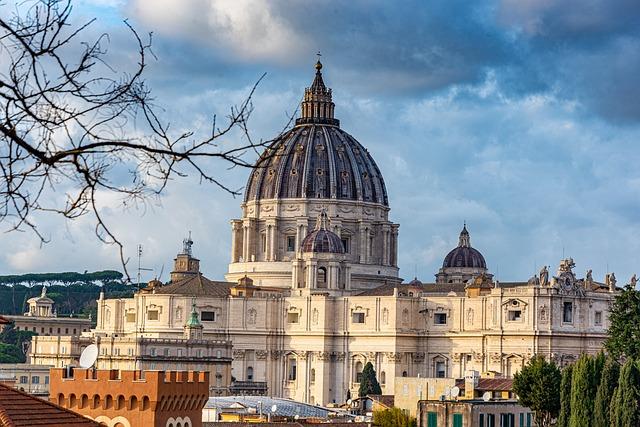In a quaint village, nestled between snow-capped mountains, the townsfolk eagerly prepared for Christmas. As the first star twinkled in the night sky, they gathered to celebrate the birth of Jesus. But their festivities didn’t end on December 25. Instead, they continued until January 6, the Feast of the Epiphany. This day marked the arrival of the Magi, symbolizing the revelation of Christ to the world. The villagers understood that Christmas was not just a day, but a season of joy, reflection, and the unfolding of divine love, inviting all to share in the light.
Table of Contents
- Understanding the Liturgical Calendar and the Christmas Season
- The Significance of the Twelve Days of Christmas
- Cultural Traditions and Celebrations Leading to Epiphany
- Embracing the Spirit of Giving Beyond December 25
- Q&A

Understanding the Liturgical Calendar and the Christmas Season
The liturgical calendar is a rich tapestry that guides the rhythm of the Catholic faith throughout the year. It is divided into various seasons, each with its own significance and themes. The Christmas season, which begins on December 25, is a time of joy and celebration, commemorating the birth of Jesus Christ. However, the festivities do not end on Christmas Day; instead, they extend until January 6, known as the Feast of the Epiphany. This period allows the faithful to fully immerse themselves in the mystery of the Incarnation, reflecting on the profound implications of God becoming man and the light that Christ brings into the world.
During this extended celebration, several key events and traditions unfold, enriching the spiritual experience of the season. The days leading up to the Epiphany are often marked by various customs, including:
- Feasting and Family Gatherings: Families come together to share meals and celebrate the joy of the season.
- Liturgical Observances: Special Masses and prayers are offered, emphasizing the themes of light and revelation.
- Gift Giving: Reflecting the gifts of the Magi, many families exchange gifts, symbolizing generosity and love.
This period serves as a reminder that the celebration of Christ’s birth is not merely a single day of festivity but a profound season of reflection, joy, and community that culminates in the revelation of Christ to the world on Epiphany.

The Significance of the Twelve Days of Christmas
The period following Christmas Day, known as the Twelve Days of Christmas, holds deep significance in the Catholic tradition. This time frame, which extends from December 25 to January 6, is a celebration of the Incarnation of Christ and the unfolding of His divine mission. Each day is an opportunity for reflection and joy, culminating in the Feast of the Epiphany, which commemorates the revelation of Christ to the Gentiles, represented by the visit of the Magi. This journey from the birth of Jesus to His manifestation to the world emphasizes the importance of recognizing and embracing the light that He brings to humanity.
Throughout these twelve days, various customs and traditions emerge, enriching the spiritual experience of the faithful. Some of the notable practices include:
- Feasting and Family Gatherings: Families come together to celebrate with special meals, reinforcing bonds and sharing in the joy of the season.
- Gift-Giving: In some cultures, gifts are exchanged on each of the twelve days, symbolizing the gifts brought to Jesus by the Magi.
- Religious Observances: Many attend Mass or participate in special prayers and devotions, deepening their connection to the mystery of Christ’s birth.
These traditions serve not only as a means of celebration but also as a reminder of the ongoing journey of faith, inviting believers to reflect on the significance of Christ’s presence in their lives and the world around them.

Cultural Traditions and Celebrations Leading to Epiphany
The period leading up to Epiphany is rich with cultural traditions and celebrations that vary across different regions and communities. In many countries, the Christmas season extends beyond December 25, culminating in the celebration of the Three Kings or the Magi on January 6. This day is often marked by vibrant parades, festive gatherings, and special meals that reflect local customs. For instance, in Spain and Latin American countries, the **Día de los Reyes** is celebrated with children eagerly awaiting the arrival of the Three Kings, who bring gifts, much like Santa Claus does on Christmas. Traditional pastries, such as the **Rosca de Reyes**, are enjoyed, symbolizing the circular nature of the season and the unity of the community.
In addition to these joyous festivities, various religious observances take place during this time. Many Catholics participate in the **Feast of the Epiphany**, which commemorates the revelation of Christ to the Gentiles, represented by the visit of the Magi. This event is often celebrated with special church services, where the story of the Magi is recounted, and blessings are given. In some cultures, it is customary to bless homes with chalk, inscribing the year and initials of the Magi above doorways as a sign of protection and goodwill. These traditions not only enhance the spiritual significance of the season but also foster a sense of community and continuity, reminding participants of the shared heritage and the joy of giving and receiving.
Embracing the Spirit of Giving Beyond December 25
As the festive lights dim and the last of the holiday treats are savored, many may wonder why the spirit of giving should linger beyond December 25. For Catholics, the celebration of Christmas extends until January 6, marking the Feast of the Epiphany. This period invites reflection on the profound significance of generosity and kindness, encouraging individuals to carry the essence of the season into their daily lives. It serves as a reminder that the joy of giving is not confined to a single day but is a continuous journey of compassion and love.
During this extended celebration, communities often engage in various acts of charity and outreach, reinforcing the idea that the spirit of giving transcends the holiday season. Some meaningful ways to embrace this ethos include:
- Volunteering at local shelters to provide warmth and support to those in need.
- Organizing food drives to ensure that everyone has access to nourishing meals.
- Donating to charities that align with personal values, fostering a sense of connection and purpose.
- Spreading kindness through small acts, such as writing notes of encouragement or helping a neighbor.
By extending the spirit of giving, individuals not only honor the true meaning of Christmas but also cultivate a culture of generosity that can inspire others throughout the year.
Q&A
-
What is the significance of January 6 in the Catholic tradition?
January 6 marks the Feast of the Epiphany, which celebrates the revelation of Christ to the Gentiles, represented by the visit of the Magi. This day concludes the Christmas season in the Catholic liturgical calendar.
-
Why do Catholics celebrate Christmas for such an extended period?
The Christmas season lasts for twelve days, starting from December 25 and ending on January 6. This tradition emphasizes the importance of the Incarnation and allows for a deeper reflection on the mystery of Christ’s birth.
-
Are there specific customs associated with the Christmas season that extend to January 6?
Yes, many cultures have unique customs that continue through the Christmas season, such as special meals, decorations, and the exchange of gifts, culminating in celebrations on Epiphany, which often includes the blessing of homes and the sharing of a festive cake.
-
How do different cultures celebrate the end of the Christmas season?
Various cultures have their own traditions for Epiphany. For example, in some Latin American countries, it is known as “Día de los Reyes” (Three Kings’ Day), where children receive gifts, and in Italy, it is celebrated with the arrival of La Befana, a kind witch who brings gifts.
As the twinkling lights fade and the last carols echo, Catholics embrace the spirit of Christmas until January 6, honoring the Epiphany. This extended celebration invites reflection on the season’s deeper meanings, uniting faith and tradition in a joyful farewell.

大家好,我是彼得潘,專業的手法身體治療師。我喜歡探索和研究各種主題,並透過與人工智慧的合作分享專業、實用、有趣的文章。我們定期進行人工審核,以確保內容的準確性。如果您發現文章中有任何不準確的地方,請隨時與我們聯繫,我們會及時糾正。您可以透過 [email protected] 與我們聯繫。



